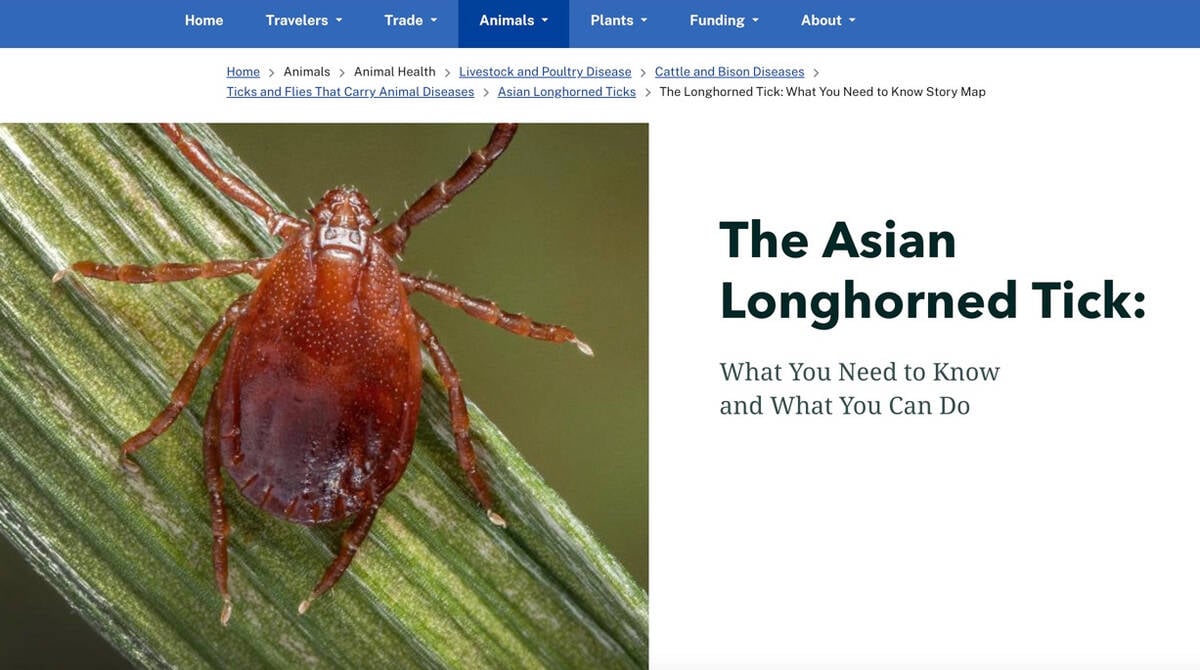Canadian livestock producers are relieved that the United States has expanded its list of Canadian meat products allowed into the U.S., but they still have questions.
Arno Doerksen, chair of Alberta Beef Producers, said no specific market value has been attached to the increased product list, and there is still no indication when live animals could cross the American border following the BSE ban imposed 11 months ago.
“Until there is more competition for live cattle, it doesn’t solve producers’ problems,” he said.
Livestock producers hope this is the beginning of a staged reopening of the border since April 7 when the U.S. closed its comment period on renewing live trade.
Read Also

New World screwworm not seen as trade threat
Canadian cattle producers shouldn’t be worried about the New World screwworm, which has become a massive concern for ranchers in Mexico and is threatening the southern United States
Effective April 19, the U.S. Department of Agriculture will allow bone-in cuts from beef cattle, lambs, goats and wild and farmed cervids. The USDA also opened the border to more offal products and ground and processed meat like salami from young Canadian animals.
It is not clear if the list includes halves and quarter carcasses from cattle younger than 30 months, said Doerksen.
Earlier, the Mexican government expanded its list of products it would accept from the U.S., so this should also be extended to Canada as the continent moves toward North American livestock trade rules.
“It’ll probably broaden the list of products that can go to Mexico,” Doerksen said.
The products that Canada can now start sending to the U.S. include boneless and bone-in bovine meat, ground meat and further processed bovine meat, tongues, lips, tripe, heart, kidney and liver. All specified risk materials must be removed with no visible nerve or lymphoid tissue from animals younger than 30 months.
Other newly allowed products include veal cuts and carcasses from calves less than 36 weeks, sheep and goats younger than 12 months, cervid meat processed in a slaughterhouse and sausage that may include cervid and pork meat.
Finished pet chews made from hides, hoofs, ligaments and bones are now allowed.
Also permitted are whole dressed carcasses for personal use from wild sheep, goats and cervids with head removed.
Trophy heads with the brain and lymphoid tissue removed are also allowed.
Musk ox and caribou cuts from Nunavut are included in the list.
It is uncertain if the volume of exports will increase by much since packers were already shipping as much as possible, said Lyndsay Routledge of the market analysis firm Canfax.
When the American border opened with a limited list of boneless cuts last September, exports surged for a short period but USDA data shows that, so far this year, U.S. imports of beef and veal from Canada are down on a year-to-year basis.
The Canadian Food Inspection Agency reports month to month exports are down eight to 12 percent from the year before.
“When we first started shipping to the U.S. in September, there were a couple weeks where we were above the previous year,” said Routledge.
Export volumes fell after BSE was reported on Dec. 23, 2003, in Washington state.
Most major trading partners stopped accepting American beef so there was adequate domestic supply without added Canadian meat.















